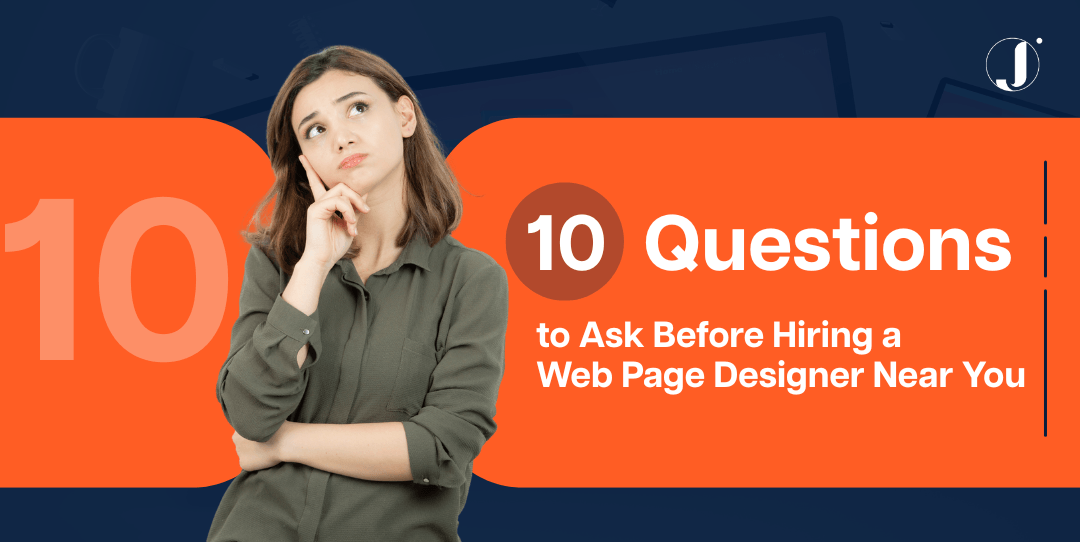You’ve decided: your business needs a better website.
One that doesn’t just look pretty but works hard, bringing in leads, telling your story, converting visitors into customers.
But before you fling open Google and start typing “web page designer near me,” pause for a moment.
Finding a web page designer near you isn’t just about proximity or visuals.
It’s about finding someone who gets you, your business, your values, your target market, and who builds a site that delivers results, not just pixels on a screen.
I’ve seen many business owners hire designers too quickly because of flashy portfolios or cheap prices, and later feel stuck with websites that don’t work well, come with confusing contracts, or always need fixing.
So, let me walk you through the 10 essential questions you must ask before signing anything.
These are not optional.
These are the differences between a website that grows your business versus one that just becomes a digital brochure collecting dust.
Why Choosing the Right Local Designer Matters for Business Growth

A great website isn’t just a pretty design, it’s your 24/7 salesperson.
Hiring a local web page designer near you gives you more than convenience. You get:
- Someone who understands your local market and audience
- Easier communication and real-time collaboration
- A partner who can visit your business and translate your brand into a performing website
When you choose right, your website becomes a lead generator, not just a digital brochure.
The 10 Questions to Ask Before Hiring a Web Page Designer
- What’s your design process?
- Do you specialize in small business websites?
- Can I see your portfolio and case studies?
- How do you ensure my site is mobile-friendly?
- Do you provide SEO-friendly design?
- Will I own my website after launch?
- What’s your typical project timeline?
- Do you offer ongoing maintenance and support?
- How do you price your projects?
- What happens if I need future updates or changes?
Ready? Bring these to your meetings, phone calls, or proposals.
If the designer hesitates or gives vague answers, that’s a red flag.
1. What’s your design process?
Ask for a clear, step-by-step plan. A trustworthy designer should explain:
- Discovery & research (goals, target audience)
- Strategy & planning (site map, features)
- Mockups, revisions, development, testing, and post-launch tweaks
If they can’t show structure, expect missed deadlines or surprise costs.
💡 Tip: Ask how many revision rounds are included and what happens after launch.
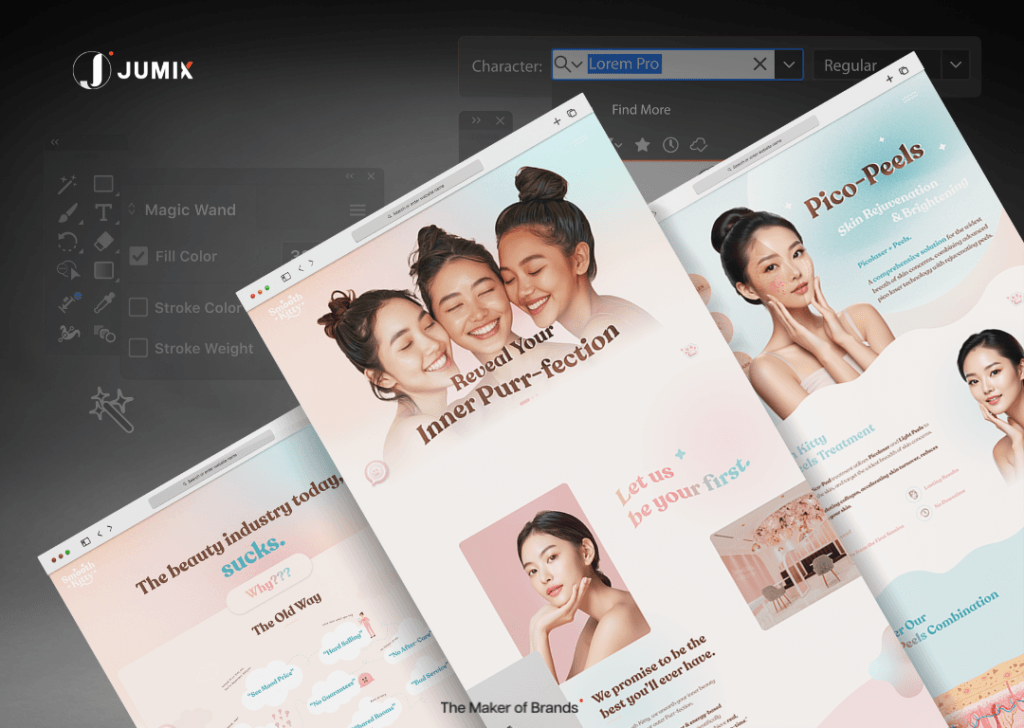
2. Do you specialize in small business websites?
Small business websites need to be clean, fast, and conversion-focused, not bloated or expensive.
A designer who specializes in SMEs will know how to:
- Keep maintenance easy
- Focus design around lead generation
- Balance quality with affordability
Ask for examples of sites built for local small businesses like yours.
If you’re a small business owner, your needs are different from big companies with massive budgets and in-house teams.
3. Can I see your portfolio and case studies?
Don’t just look at pretty designs, look for results.
Check for:
- Have they built websites for cafés, clinics, or service companies like yours?
- Does it look good on mobile and tablet?
- Measurable outcomes (traffic, conversions)
- Testimonials and local success stories
💡 Tip: Local portfolios prove the designer understands your market (e.g., Penang or Kuala Lumpur).
Check out some creative branding and identity design examples to see what quality work looks like.
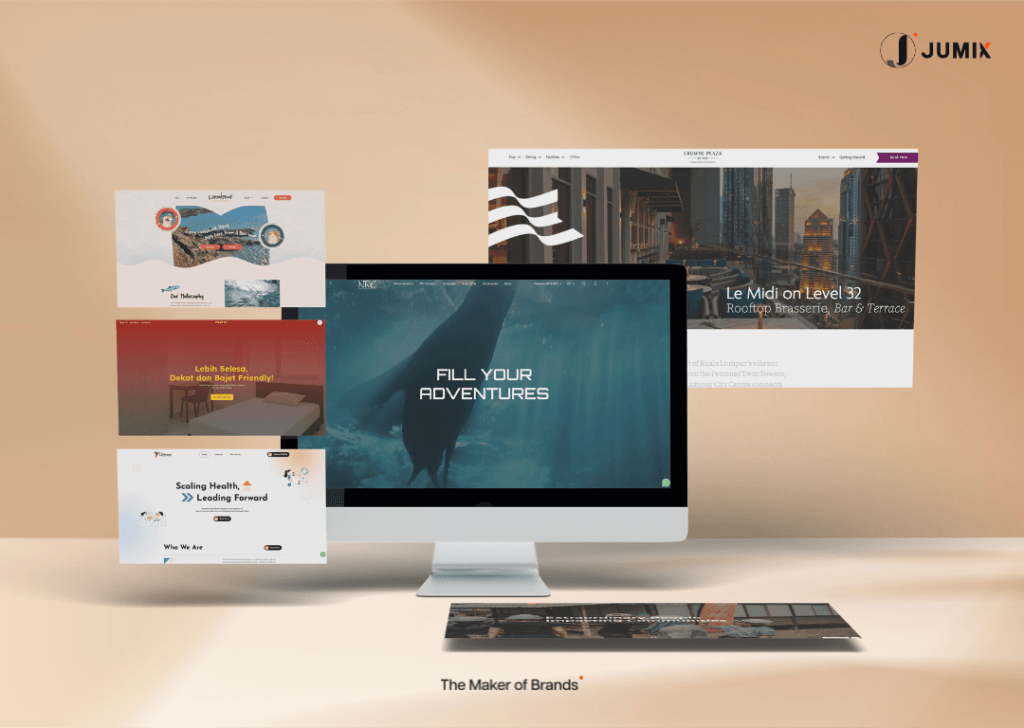
4. How do you ensure my site is mobile-friendly?
Mobile-first design is non-negotiable in 2025.
Ask how they test on multiple devices and browsers.
Look for:
- Responsive layouts that auto-adjust
- Fast load time (<3 seconds)
- Proper mobile navigation
If they don’t bring up mobile until you do, walk away.
Malaysia is recognized for its high digitization rates, with mobile phone penetration at nearly 130% (International Trade Administration).
If your website doesn’t look good or load fast on mobile, you’ll lose potential customers instantly.
Learn more about why mobile-friendly websites are absolutely essential for modern businesses.

5. Do you provide SEO-friendly design?
A website must be searchable, not just beautiful.
Ask your designer if they:
- Use semantic HTML and clear page structure
- Optimize images and meta tags
- Include schema markup
- Provide fast, crawlable code
- Generate a sitemap and robots.txt
💡 Ask for proof: “Show me before-and-after examples where SEO improved.”

SEO (Search Engine Optimization) means making your website easy to find on Google.
A truly good web page designer near you builds SEO from Day 1.
They don’t “add SEO later” as an afterthought.
Your designer should know how to structure your site, name your pages, and use proper coding practices that make it easier for search engines to understand.
If they can’t show how they’ve improved SEO for past clients, that’s a red flag.
Understanding the fundamentals of SEO-friendly website design will help you evaluate whether your designer truly knows their stuff.
6. Will I own my website after launch?
You should always own your domain and your company’s data.
Confirm in writing that:
- Your name is on the domain registration
- You get to export data you collected on your website
- You get to retrieve data you provided
Avoid designers who lock you into long-term control or charge “access” fees.
This one is huge, and often overlooked.
Don’t sign until ownership is explicitly clarified in writing.
The designer should simply be helping you build it, not keeping control of it.
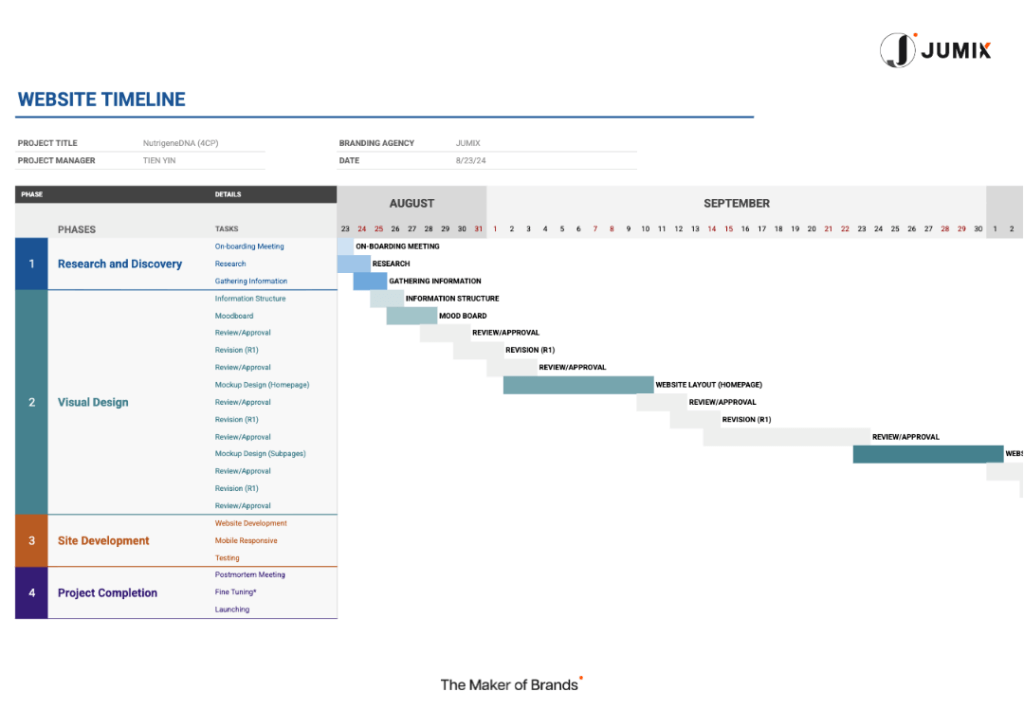
7. What’s your typical project timeline?
Professional designers provide a realistic schedule, not hype.
For reference:
- 5–7 page site: ~4–8 weeks
- E-commerce: ~12–16 weeks
Ask for milestones, review points, and what causes delays.
If someone promises a full site in a few days, they’re cutting corners.

8. Do you offer ongoing maintenance and support?
Websites need updates, backups, and security patches.
Ask:
- What support is included post-launch?
- How do you handle bugs or urgent issues?
- Are there affordable maintenance plans?
Having reliable support avoids future headaches.
Some may include it for a few months, while others offer long-term packages.
Before committing, understand what website maintenance actually involves and why it’s crucial for long-term success.
9. How do you price your projects?
Transparency prevents surprises.
Common pricing models:
- Flat fee (fixed deliverable)
- Hourly rate (flexible but variable)
- Subscription or retainer (ongoing relationship)
- Value-based pricing (tied to complexity and expected ROI)
Ask for a line-item breakdown: design, development, content, testing, and post-launch support.
💡 Beware: Very low prices often mean hidden costs or limited ownership.
A good web page designer near you is upfront about costs, doesn’t hide “extras,” and ensures you’re comfortable with the model.
For budget planning, check out our detailed breakdown of website design and development costs in Malaysia and what you should expect to pay.
| Pricing Model | How It Works | Example Scenario | Best For | Pros | Watch Out For |
| Flat Fee (Project-Based) | One fixed price for a clearly defined website scope and deliverables. | A café in Penang pays RM4,500 for a 5-page website (Home, Menu, Gallery, About, Contact) with a clear timeline and two revision rounds. | Small to mid-sized projects with well-defined needs. | ✅ Easy to budget ✅ Clear milestones ✅ No surprise costs | ⚠️ Limited flexibility if scope changes ⚠️ Extra features cost more |
| Hourly Rate | You’re billed for every hour spent designing, coding, or making updates. | A tech startup in Kuala Lumpur hires a designer at RM150/hour to build and tweak custom animations over several weeks. | Ongoing projects or flexible scopes. | ✅ Flexible for evolving projects ✅ Transparent effort tracking | ⚠️ Costs can rise fast ⚠️ Hard to estimate total upfront |
| Package / Subscription | A monthly or quarterly plan covering website design, updates, and maintenance. | A local salon subscribes to a RM350/month plan that includes hosting, small content edits, backups, and technical support. | SMEs that want ongoing maintenance and predictable payments. | ✅ Lower upfront cost ✅ Continuous improvements and updates | ⚠️ Long-term cost can exceed one-time builds ⚠️ Check ownership rights carefully |
| Value-Based Pricing | Price is set based on business goals, ROI, or expected results, not just hours or pages. | A construction company in Johor agrees to RM15,000 for a redesign projected to increase lead conversions by 40%. | Businesses focused on measurable growth and ROI. | ✅ Aligns design with business results ✅ Encourages accountability and strategy | ⚠️ Usually higher initial investment ⚠️ Requires clear KPIs or performance metrics |
10. What happens if I need future updates or changes?
Your website should grow with your business.
Find out:
- Whether you can edit content yourself (via CMS)
- How they handle new page requests
- Their change-request turnaround time
Good designers empower you to manage small updates and stay flexible for big ones.

Red Flags That Should Make You Walk Away
Avoid designers who:
- Skip SEO, mobile, or security topics
- Refuse to provide references
- Push you to sign quickly
- Use generic templates
- Poor or slow communication
- No contract or vague contract
If something feels off, it probably is. Always choose clarity and transparency.
Learn to spot the warning signs that you need a better web developer before it’s too late.
Why Hiring Local Designers Has Advantages
Working with a web page designer near you in Malaysia offers:
- Face-to-face collaboration
- Local insights (audience, trends, language)
- Faster fixes and better accountability
👉 Tip: Search for designers with verified local case studies and Google reviews.
When you hire a local web page designer near you, you’re not just paying for convenience, you’re building a relationship.

Real human connection
Face-to-face conversations, casual meetings, coffee catch-ups.
These help you communicate vision, nuance, and trust, in ways Zoom calls often can’t.
Local market insights
Someone in Kuala Lumpur, Penang, Johor or up your way sees your customers in the wild, hears local slang, and knows the competitive layout.
They can tailor your messaging so it resonates.
Easier communication
Same timezone, shared culture, language nuances. No cross-continent delays or misunderstandings.
Faster fixes
When your site hiccups, you don’t wait for someone overseas to log in. Local support means quicker resolution.
If you’re in Penang, discover why Penang businesses specifically benefit from website upgrades with local expertise.
Ready to Find Your Perfect Web Designer?
Look, I get it.
Hiring a web page designer near you feels like a big decision because it is.
Your website is the face of your business online.
It’s how customers find you, learn about you, and decide whether to trust you with their money.
You can’t afford to get this wrong.
At Jumix, we’ve been building websites for Malaysian businesses since 2014.
We know what works here because we live here, work here, and understand the local market inside and out.
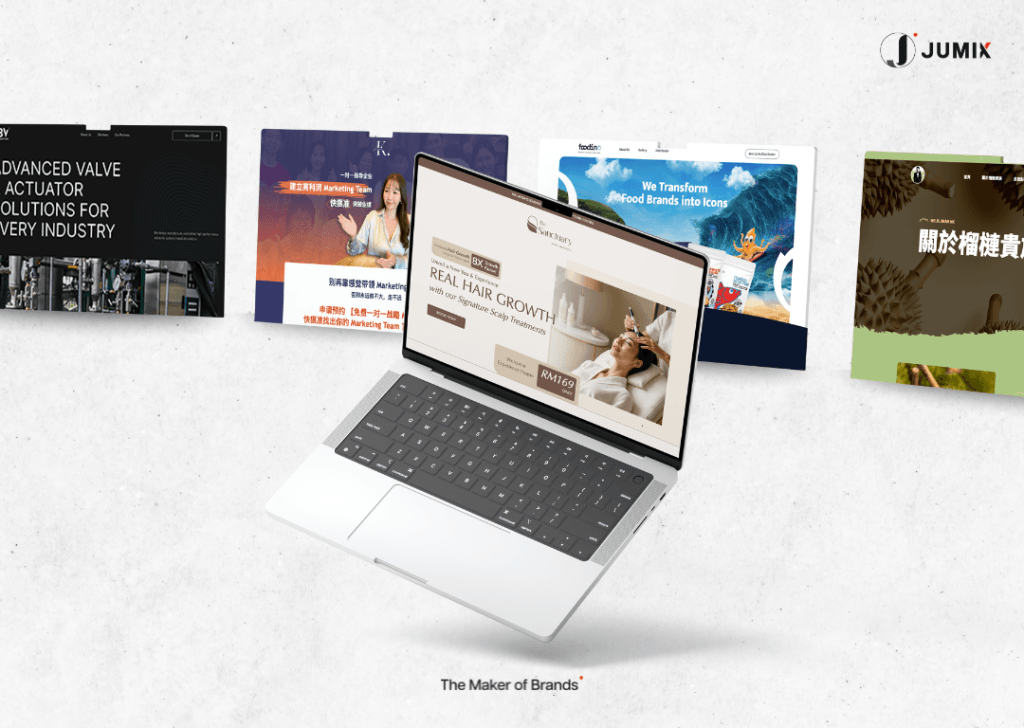
We specialize in small business websites that actually generate leads and sales, not just pretty designs that sit there looking nice.
Ready to talk about your project?
Contact us for a free consultation and let’s discuss how we can build a website that grows your business.
No pressure. No sales pitch.
Just honest conversation about what you need and whether we’re the right fit.
Because that’s how local businesses should work together.
Frequently Asked Questions
1. How much does a web page designer near me cost?
Answer:
A small business website in Malaysia typically costs between RM2,500 and RM8,000 for a simple 5–7 page design.
For advanced sites with e-commerce, membership systems, or custom integrations, expect RM10,000–RM50,000+.
Pricing models:
- Flat fee: One-time payment for a full project.
- Subscription model: RM200–RM800/month — review ownership terms carefully.
- Custom quote: Always ask for a breakdown of deliverables and ongoing costs.
💡 Tip: Never agree to monthly fees that restrict your control over your domain or website files.
Learn more: Website design cost in Malaysia (comprehensive guide)
2. Is it better to hire a freelancer or a company?
Answer:
Both options can work, it depends on your goals, budget, and support needs.
Freelancer pros & cons:
✅ Lower cost
✅ Direct communication with one person
⚠️ Limited capacity and no backup if unavailable
Agency pros & cons:
✅ Team strength and skill diversity
✅ Project management and reliability
⚠️ Higher cost, more structure
💡 Recommendation:
Hire a freelancer for small, short-term projects.
Hire an agency for long-term business websites that require scalability and maintenance.
Explore more: Choosing the right web development company in Malaysia
3. Can I edit the site later on my own?
Answer:
Yes, if your site is built on a content management system (CMS) like WordPress, Drupal, or similar.
You should be able to:
- Edit text and pages
- Upload new images
- Publish blog posts
- Update contact info
For advanced changes (e.g., new pages, layout edits, or coding):
You’ll likely rely on your designer or developer.
Ask upfront about training, admin access, and editing permissions.
4. What happens if my web designer goes out of business or disappears?
Answer:
If you own your domain, you’re safe.
Another designer can easily take over your site.
To protect your business:
- Register the domain under your name
- Maintain backups of data
Losing a designer should never mean losing your website, it’s only a problem if they controlled all your access.
5. Why is having a website important for my business?
Answer:
Your website is your digital storefront, open 24/7, even when you’re not.
Key benefits:
- Builds credibility and trust
- Helps customers find you on Google
- Tells your story and explains your services
- Generates leads and sales automatically
In today’s digital-first world, businesses without websites lose visibility to competitors.
A professional site gives small businesses a level playing field against larger brands.
Read more: Why having a website matters for business growth
Sanz Teoh
Latest posts by Sanz Teoh (see all)
- 10 Questions to Ask Before Hiring a Web Page Designer Near You - October 23, 2025
- The Cost of Search Engine Marketing in Malaysia: What Business Owners Should Budget (2026 Guide) - October 12, 2025
- Malaysia eCommerce Company Guide: How to Start and Scale Your Online Business (2026 Edition) - September 30, 2025

